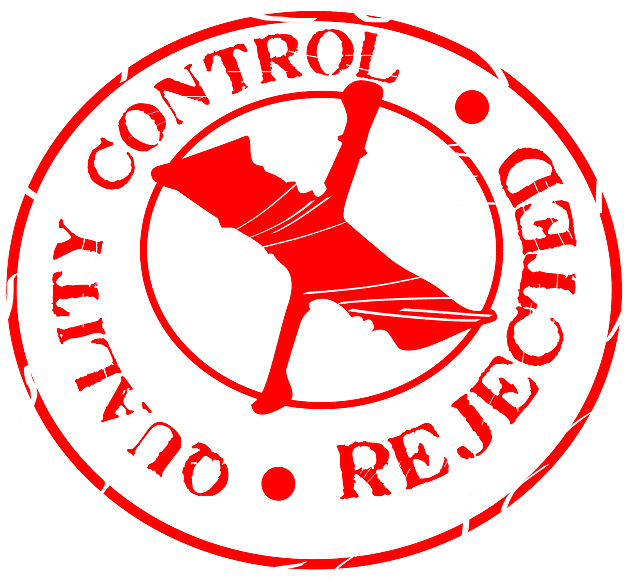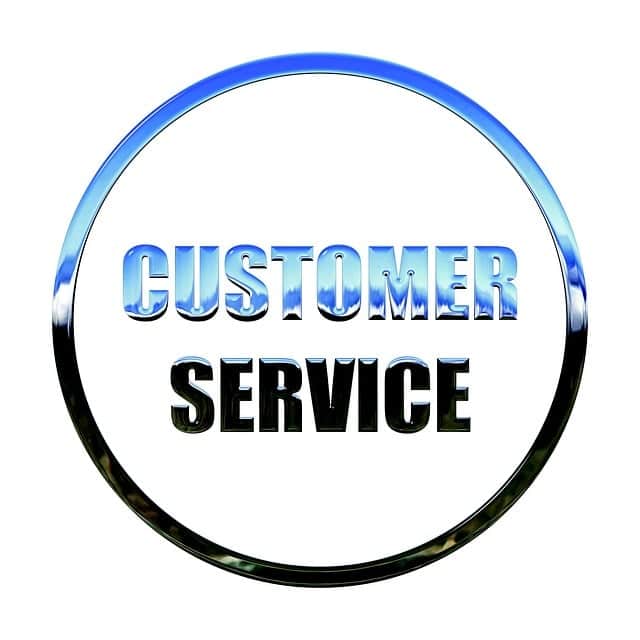Imagine a streamlined operation where every component works seamlessly to ensure top-notch quality. That’s where CMMS (Computerized Maintenance Management System) steps in, revolutionizing quality assurance processes at the executive level. In today’s dynamic business environment, maintaining high standards is not just a goal but a necessity for sustained success.
CMMS integrates crucial elements like maintenance scheduling, equipment tracking, and data analysis into a cohesive platform. This synergy allows executives to proactively monitor and manage assets, reducing downtime and enhancing operational efficiency. By harnessing real-time insights, decision-makers gain a comprehensive view of maintenance activities across facilities, enabling them to make informed strategic decisions.

At its core, CMMS acts as a guardian of quality by ensuring equipment reliability and compliance with regulatory standards. It empowers executives with predictive analytics, alerting them to potential issues before they escalate, thus minimizing risks and maximizing productivity. This proactive approach not only safeguards operational continuity but also fosters a culture of continuous improvement within the organization.
Moreover, CMMS facilitates seamless communication between departments, fostering collaboration that is pivotal in maintaining consistent quality standards. Executives can easily access performance metrics and historical data, allowing for data-driven assessments and strategic planning. This data accessibility empowers them to allocate resources efficiently, optimize workflows, and ultimately, elevate the overall quality assurance framework.
In essence, CMMS serves as a cornerstone in the executive toolkit, driving efficiency and excellence in quality assurance processes. By leveraging technology to streamline maintenance operations and enhance visibility, organizations can uphold their commitment to delivering superior products and services. It’s not just about managing assets; it’s about orchestrating a symphony of operations that culminates in unparalleled quality and customer satisfaction.
This article highlights the pivotal role of CMMS in enhancing quality assurance processes at the executive level, emphasizing its benefits in maintaining high standards and operational efficiency.
Streamlining Excellence: CMMS Integration in Executive Quality Assurance Strategies
Imagine a scenario where every component of your organization works in perfect harmony, like a well-oiled machine. That’s precisely what CMMS integration aims to achieve in executive quality assurance strategies. By leveraging advanced software solutions, companies can efficiently manage maintenance schedules, track assets, and enhance overall operational efficiency.
One of the key benefits of CMMS integration lies in its ability to centralize data. Instead of scattered information across multiple platforms, executives gain access to a unified dashboard that provides real-time insights into maintenance activities. This centralized approach not only saves time but also reduces the risk of errors, ensuring that decisions are based on accurate, up-to-date information.
Moreover, CMMS facilitates proactive maintenance practices. By scheduling preventive maintenance tasks based on data-driven insights, organizations can mitigate the risk of unplanned downtime and costly repairs. This proactive approach not only extends the lifespan of assets but also boosts productivity by keeping operations running smoothly.
Another significant advantage of CMMS integration is its role in compliance and risk management. Executives can ensure that maintenance activities adhere to regulatory standards and industry best practices. This adherence not only mitigates legal risks but also enhances the overall reputation and credibility of the organization.
Furthermore, CMMS enhances collaboration between different departments. By providing a platform for transparent communication and workflow management, it fosters synergy among teams. This collaborative environment promotes innovation and continuous improvement, driving the organization towards excellence in quality assurance.
Elevating Standards: The Role of CMMS in Executive Quality Assurance Initiatives
CMMS facilitates meticulous oversight of maintenance activities, ensuring that equipment and facilities operate at peak efficiency. By streamlining maintenance processes and scheduling regular inspections, CMMS helps prevent unexpected breakdowns and minimizes downtime, thereby optimizing operational performance. This proactive approach not only enhances productivity but also contributes significantly to maintaining consistent quality standards.
Moreover, CMMS empowers executives with real-time data and analytics, providing valuable insights into asset performance and maintenance trends. This data-driven approach enables informed decision-making, allowing executives to allocate resources effectively and prioritize critical maintenance tasks. By identifying potential issues before they escalate, CMMS supports a proactive maintenance strategy that aligns with quality assurance goals.

Furthermore, CMMS fosters transparency and accountability within organizations. Through comprehensive tracking of maintenance activities and compliance with regulatory requirements, executives can ensure adherence to industry standards and regulatory guidelines. This capability is essential for industries such as manufacturing, healthcare, and hospitality, where compliance with stringent quality standards is non-negotiable.
In essence, the integration of CMMS into executive quality assurance initiatives represents a paradigm shift towards proactive maintenance and operational excellence. By leveraging technology to streamline processes, enhance data visibility, and foster accountability, organizations can elevate their standards of quality assurance, thereby gaining a competitive edge in today’s dynamic market landscape.
From Insight to Action: CMMS Tools Revolutionizing Executive QA Oversight
Imagine having a bird’s eye view of your organization’s quality metrics, trends, and operational efficiencies all in one dashboard. CMMS tools offer exactly that. They aggregate data from various sources—production lines, maintenance schedules, defect reports—and transform them into meaningful insights. Executives can now pinpoint areas needing improvement with precision, identifying bottlenecks or recurring issues that impact product quality or operational effectiveness.
One of the key advantages of CMMS tools is their real-time monitoring capability. Unlike traditional QA oversight methods that relied on periodic reports or manual data collection, CMMS tools provide up-to-the-minute updates. This allows executives to react swiftly to deviations from quality standards, preventing potential issues from escalating into larger problems.
Moreover, these tools facilitate proactive decision-making. By analyzing historical data and predictive analytics, executives can forecast maintenance needs or quality trends. For instance, they can foresee equipment failures before they occur, thus minimizing downtime and maintaining product quality consistently.
Integration is another hallmark of CMMS tools. They seamlessly integrate with existing Enterprise Resource Planning (ERP) systems or Manufacturing Execution Systems (MES), creating a unified ecosystem of data. This integration streamlines communication between departments, fostering collaboration in addressing quality issues across the organization.
Precision Partners: CMMS Solutions and Executive QA Collaboration
CMMS, or Computerized Maintenance Management Systems, form the backbone of proactive maintenance in modern industries. These systems aren’t just about fixing things when they break; they’re about predictive analytics, scheduling, and optimizing resources. Imagine having a digital assistant that knows exactly when each piece of equipment needs maintenance before it causes downtime. That’s the power of CMMS.
Now, pair this with Executive QA, which isn’t your run-of-the-mill quality assurance. It’s the orchestra conductor of product excellence, ensuring every part meets stringent standards before it reaches the customer. Think of it as a meticulous inspector with a magnifying glass, catching even the slightest imperfections to prevent product recalls or customer dissatisfaction.
The magic happens when CMMS and Executive QA join forces. It’s like having Sherlock Holmes team up with a technological wizard. CMMS predicts maintenance needs based on real-time data, while Executive QA ensures that every piece of machinery and every manufactured item meets exacting standards. Together, they create a harmonious symphony of efficiency and quality.
Imagine a manufacturing floor where machines hum smoothly because they’re maintained proactively, not reactively. Picture products rolling off the assembly line, each one passing through stringent quality checks effortlessly. That’s the promise of Precision Partners: where CMMS solutions and Executive QA collaborate seamlessly to minimize downtime, optimize resources, and deliver products that exceed expectations.
CMMS Innovations Driving Efficiency in Executive Quality Assurance
CMMS (Computerized Maintenance Management Systems) innovations are revolutionizing Executive Quality Assurance (QA), enhancing efficiency across industries. These systems integrate advanced technology to streamline maintenance operations, ensuring optimal performance and reliability of equipment and processes.
In today’s fast-paced business environment, executives rely on CMMS to maintain high standards of quality assurance without operational delays. These systems offer real-time monitoring and predictive maintenance capabilities, allowing proactive identification and resolution of potential issues before they escalate. This proactive approach minimizes downtime, boosts productivity, and reduces overall maintenance costs.
Imagine CMMS as a digital watchdog, constantly analyzing data and providing actionable insights to executives. It’s like having a virtual assistant that not only alerts you to upcoming maintenance tasks but also suggests optimization strategies based on historical data and industry best practices.
These innovations in CMMS aren’t just about efficiency—they’re about empowerment. Executives can make informed decisions quickly, backed by accurate data and predictive analytics. This capability not only improves operational efficiency but also enhances strategic planning and resource allocation.
Moreover, CMMS innovations ensure compliance with regulatory standards and industry requirements, mitigating risks associated with quality control and safety protocols. By automating routine tasks and optimizing workflows, these systems enable executives to focus on strategic initiatives that drive growth and profitability.
CMMS innovations are reshaping Executive Quality Assurance by delivering tangible benefits such as enhanced operational efficiency, reduced downtime, improved decision-making, and regulatory compliance. As technology continues to evolve, these systems will play an increasingly critical role in maintaining competitive advantage and achieving sustainable business success.
This article highlights the transformative impact of CMMS innovations on Executive Quality Assurance, emphasizing efficiency, proactive maintenance, data-driven decision-making, and compliance.
Frequently Asked Questions
What are the key benefits of using CMMS for executive-level quality assurance?
Discover the essential advantages of employing a CMMS (Computerized Maintenance Management System) for executive-level quality assurance. Learn how CMMS enhances operational efficiency, streamlines maintenance processes, ensures regulatory compliance, facilitates data-driven decision-making, and ultimately boosts productivity across organizational levels.
How does CMMS streamline communication between departments in quality assurance?
Learn how CMMS optimizes communication between departments in quality assurance by centralizing data, automating workflows, and facilitating real-time updates, ensuring seamless collaboration and efficiency.
What are the cost implications of implementing CMMS for executive-level quality assurance?
Learn about the cost implications of implementing CMMS for executive-level quality assurance, focusing on budget allocation for software acquisition, integration costs, training expenses, and potential ROI.
How can CMMS enhance decision-making in quality assurance at the executive level?
Discover how CMMS (Computerized Maintenance Management Systems) empower executives in quality assurance by streamlining data access, enabling real-time insights, and enhancing strategic decision-making.
What role does CMMS play in ensuring regulatory compliance for executives?
Learn about the pivotal role of CMMS in ensuring regulatory compliance for executives. Discover how CMMS software facilitates efficient tracking, documentation, and management of critical assets and processes, ensuring adherence to industry regulations and standards.